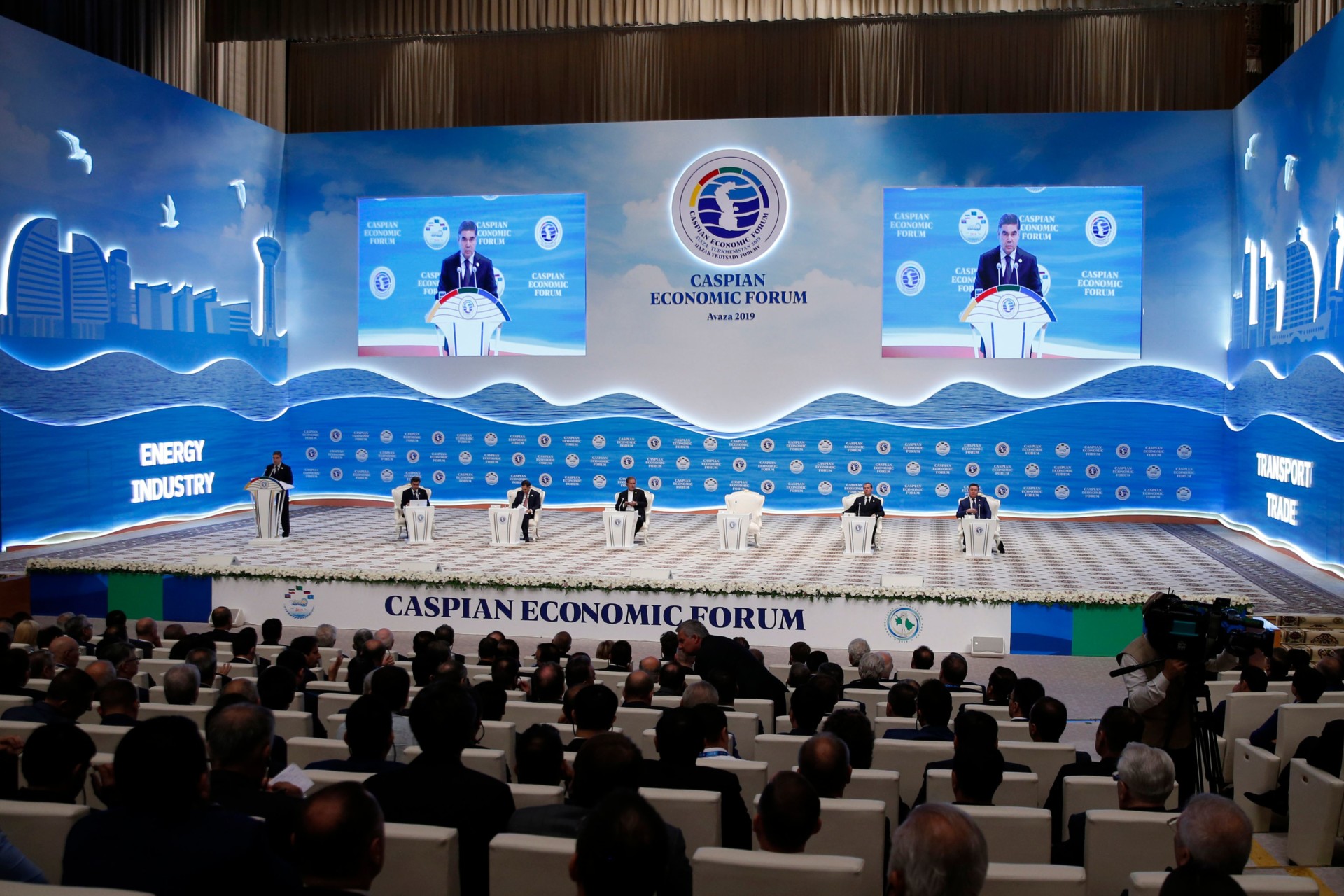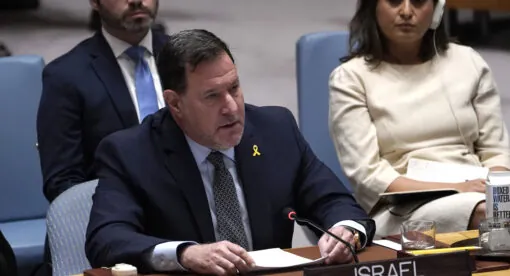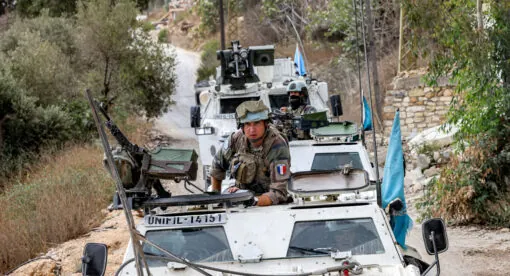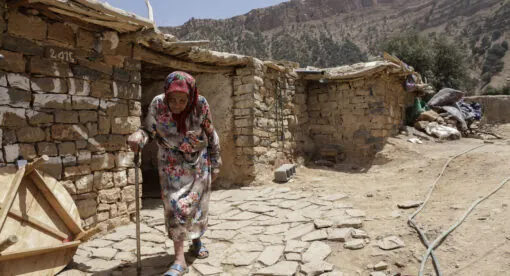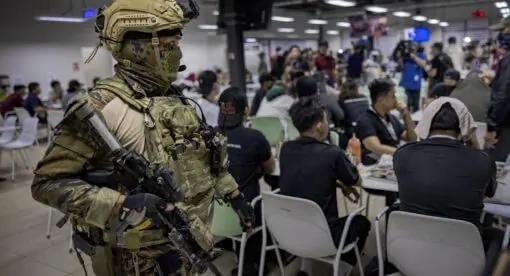Russian elites still consider it a given that Russia is the hegemon of Central Asia, even as that hegemony erodes. This is characteristic of Russia’s foreign policy thinking, which frequently conflates the “ought” with the actual and cannot adjust to the end of empire — a fact that Russian and Central Asian observers readily attest to.
Russia still holds powerful influence over Central Asia — in the areas of culture, economics, politics, and defense — and will not surrender them without a fight, although not necessarily an armed clash. Nevertheless, in all these areas Russia is facing growing challenges from within Central Asia just as China’s influence in the region is on the rise. Washington must better understand these twin dynamics as a first step towards enhancing its own influence in the region.
Cultural Sphere
The Russian language and culture once were powerful magnets. However, Russia’s monopoly over Central Asian culture no longer exists. Ambitious Central Asian elites, such as Kazakhstan’s new President Kassym-Jomart Tokayev, used to gravitate toward Russian educational institutions. But deliberate state policies and support from foreign governments and foundations allow young Central Asians to go to Europe, the United States, and China, where they can forge new ties and gain broader perspectives.
Moreover, the Russian language is no longer dominant in Central Asia. As part of the nationalist and state-building projects of the last 30 years, every Central Asian state but Tajikistan — the only Central Asian country whose culture and language have Persian roots — have Latinized their alphabets. This is a departure from the Soviet-imposed Cyrillization of their alphabets and Moscow’s Russification policies. Both indigenous and Russian sources show Moscow reacted “hysterically” or “with geopolitically saturated aversion” to this change. The Russian language and its advocates are still hanging on in places like Uzbekistan, but even the Uzbek state is making its Latin script closer to Turkey’s.
Economic Sphere
Moscow possesses strong economic influence in Central Asia. Russia controls the volume of remittances sent by laborers (mainly men) who migrate to Russia for work and send money back to their families. Tajikistan, for example, depends heavily upon these remittances. Also, except for Turkmenistan’s pipelines to China, Central Asian oil and gas pipelines built during Soviet times still flow westward through Russia to Europe. Russia has consciously used its power to control much of these countries’ energy exports to subsidize its domestic market while benefiting from the high prices it charges its Western neighbors and consumers in Central and Eastern Europe.
More recently, Moscow has exploited Turkmenistan’s mismanagement of its economy and energy resources, along with Ashgabat’s lack of alternatives, to restore the flow of Turkmen gas through Russian pipelines to Europe for the first time since 2009. Since Kazakh and Uzbek oil and gas also largely go through Russia, Moscow has a powerful position in the Central Asian energy sector.
Finally, the Eurasian Economic Union, the centerpiece of Russian President Vladimir Putin’s regional policies since 2011, is a strong attempt to bind Central Asian economies to Moscow’s overall direction. The union embodies Russia’s efforts to dominate smaller economies and preserve some elements of the integrated Soviet economy.
Yet the economic sphere also holds growing challenges to Russia’s hegemony. Since 2008, Russia and China have been competing in Central Asia, and Russia has not been able to hedge against China’s growing influence. China frustrated Russia’s attempts to dominate the region’s energy industry and force it into a single Russian channel. China has also become Central Asia’s primary money and foreign capital market. Similarly, China’s commercial penetration of Central Asia has triggered increasing Russian anxiety. As a result, Moscow is taking measures to restrict Central Asian trade with China, like the new Eurasian Union and accompanying Customs Union.
Russia has nothing to offer to compete with China’s Belt and Road Initiative (BRI) in terms of investment in Central Asian infrastructure. Meanwhile, Indian, Japanese, Korean, and U.S. interest and investment in Central Asia is growing, while new opportunities for pipelines running to destinations beyond Russia are developing. It remains unclear whether the 2018 Caspian convention will allow Central Asian suppliers like Turkmenistan and Kazakhstan to ship oil and gas through the Caspian Sea and bypass Russia, but the interest in doing so continues to grow. Moreover, the long-hyped Turkmenistan-Afghanistan-Pakistan-India pipeline is finally being built.
Moscow’s decision to remain primarily an energy producer and not reform its economy inhibits its ability to satisfy Central Asia’s growing demand for public goods and investment. Central Asia’s plan to foster coordination among governments in the region will enhance cooperation and autonomy for the region in decision-making and economic policy, especially regarding large-scale economic projects.
Defense Sphere
Russia created the Collective Security Treaty Organization (CSTO) as a mechanism for unobtrusively dominating the Central Asian military scene and shielding itself and these states from the terrorist threats stemming from the Chechen Wars and the ongoing war in Afghanistan. Under that arrangement, Moscow has educated Central Asian officers, sold Central Asian militaries subsidized weapons, conducted exercises with Central Asian forces, and worked very closely with (and presumably penetrated) their intelligence agencies. Moscow has used its might and influence to conclude basing agreements with Tajikistan and Kyrgyzstan. As part of its intensifying pressure on Central Asian states to integrate with it, Russia recently secured an expansion of its airbase at Kant in Kyrgyzstan at a minimal cost. There is also talk of a second base in Kyrgyzstan.
Russia has also endeavored to play a leading role in fostering peace in Afghanistan that would put the Taliban in power and, in theory, would not generate terrorism beyond Afghanistan’s borders. Russia’s motives here are also animated by its rapprochement with Pakistan and by broader concerns of anti-Americanism.
Yet Central Asian governments, especially Tajikistan, do not feel that Russia’s efforts have pacified Central Asia or removed terrorism risks there. Neither does Moscow want its forces in Central Asia to have to engage in what could only be a protracted counter-insurgency with Afghanistan-based terrorists. It is also quite unlikely that Russia will be able to quell unrest in any Central Asian state that grows beyond the local governments’ means of controlling it. Recent demonstrations in Kazakhstan in response to its elections underscore the gap that can exist between governments and societies. Moscow cannot do much to overcome that issue, for its mantra is stability and repression — a remedy that will not cure this fever.
Meanwhile, foreign powers are challenging Russia’s military hegemony in Central Asia. Washington maintains military training and cooperation with Central Asian states. But the biggest challenge is China. In 2016, China signed an anti-terrorism alliance with Pakistan, Afghanistan, and Tajikistan. Since then it has obtained at least one base in Central Asia — in Tajikjistan’s Wakhan peninsula, straddling Tajik and Afghan territory and only 30 kilometers from Pakistan-administered Kashmir. Russian and American analysts alike expect these gambits to evolve rapidly into a network of bases. That outcome makes considerable sense, given China’s BRI and other investments in Central Asia and its paranoia about Xinjiang that has led to Orwellian policies there. China has even coerced Tajikistan into surrendering territory and valuable economic concessions.
Russia on the Wane
It is quite clear that Russia’s hegemony in Central Asia is eroding rapidly, in stark contrast with China’s flourishing capabilities there. Indeed, recent Russian pressure on Tajikistan and Kyrgyzstan — among the weakest states in Central Asia — demonstrates Moscow’s anxiety about its diminishing sway over the region, though Tajikistan is in many ways a Russian outpost.
Indeed, Russia is already involved in a rivalry with China for influence, and we can see a potential Indian challenge and rising self-assertion within Central Asia itself. The tide of Russian hegemony is rolling out, but nobody yet knows what will replace it, when that will occur, or how. However, there is a window of opportunity for Washington to take advantage of and increase its influence in a region that has been under Russian domination for well over two centuries.
Dr. Stephen Blank is a Senior Fellow at the American Foreign Policy Council. He is the author of numerous foreign policy-related articles, white papers, and monographs — specifically focused on the geopolitics and geostrategy of the former Soviet Union, Russia, and Eurasia. He is a former MacArthur Fellow at the U.S. Army War College.
The views expressed in this article are those of the author and not an official policy or position of the Newlines Institute.

